With around 200 countries and more than 7.8 billion people (plus plants, animals, and other organisms), the world is full of interesting, fun, and fascinating facts. In the land of the Kiwis, for instance, you'll find the highest concentration of pet owners on the planet. And over in Nicaragua, you'll find one of the only two flags in the world to feature the color purple. Hungry for more facts about the world and its ever-growing population? Read on to learn some interesting trivia about the Earth's past, present, and future.
1Glaciers and ice sheets hold about 69 percent of the world's freshwater.
Just over 96% of the total amount of the world's water is held in its oceans, according to Water in Crisis: A Guide to the World's Fresh Water Resources via the United States Geological Survey (USGS). However, that's primarily saltwater. To find the bulk of the world's freshwater you need to trek to the poles, as 68.7% of it is encased in ice caps, permanent snow, and glaciers. For more facts sent right to your inbox, sign up for our daily newsletter.
2The fastest gust of wind ever recorded on Earth was 253 miles per hour.

Hang on to your hats because this isn't your average wind storm. In 1996, a tropical cyclone named Olivia hit off the coast of Barrow Island, Australia with such a force that it broke an incredible record. According to The Weather Channel, "Olivia's eyewall produced five extreme three-second wind gusts, the peak of which was a 253 mph gust," which blew past the previous wind record of 231 mph set in Mount Washington, New Hampshire back in 1934.
3Recent droughts in Europe were the worst in 2,100 years.
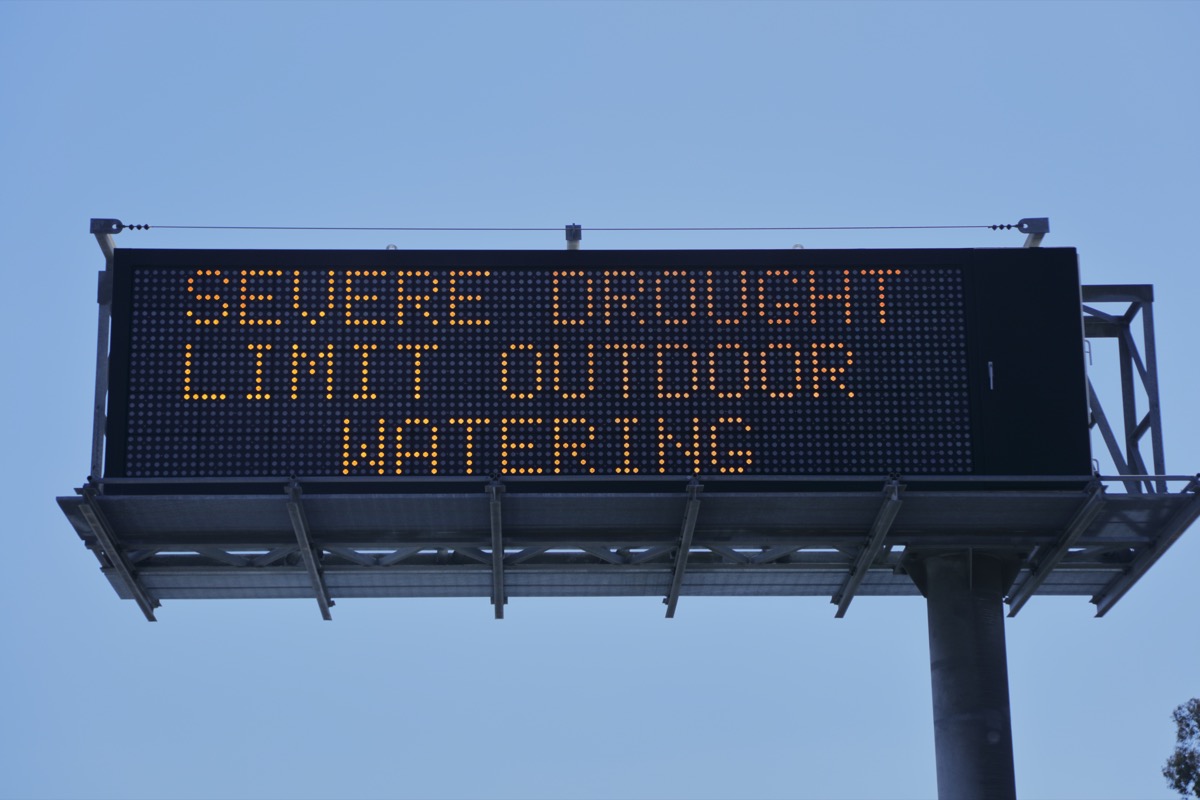
Europe has been experiencing serious dry spells and extreme heat since 2015, which has caused major droughts. Research done led by the University of Cambridge (and published on the National Oceanic and Atmospheric Administration website) looked at isotopes in the rings of old European Oak trees in Central Europe which formed over thousands of years to try to pin down the cause. They discovered that the dry spells are a "result of human-caused climate change and associated shifts in the jet stream," according to EurekAlert!
4The best place in the world to see rainbows is in Hawaii.
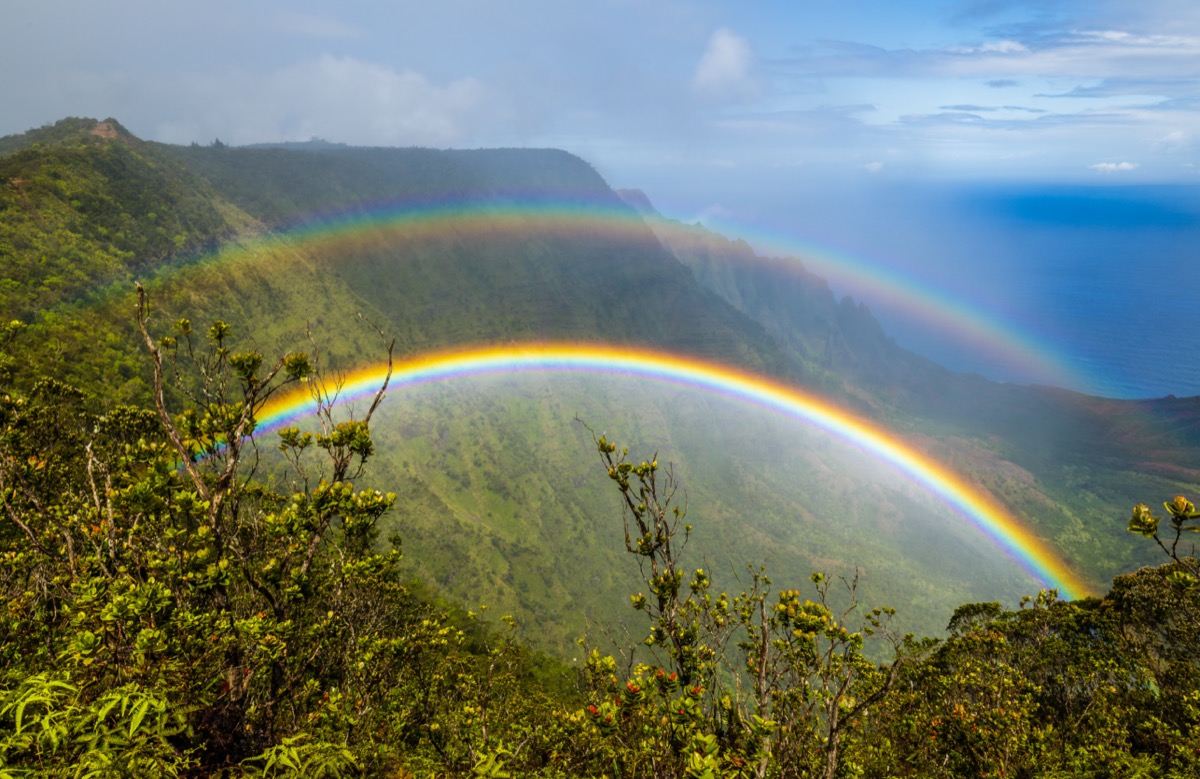
If you're an avid rainbow gazer and want to get your fill of the beautiful phenomenon, look no further than the state of Hawaii. A study published by the American Meteorological Society in 2021 noted that the area's "mountains produce sharp gradients in clouds and rainfall, which are key to abundant rainbow sightings." Air pollution, pollen, and a large amount of cresting waves also help to put Hawaii at the top of the list when it comes to rainbow quantity and quality.
5There are fossilized plants in Greenland under 1.4 km of ice.
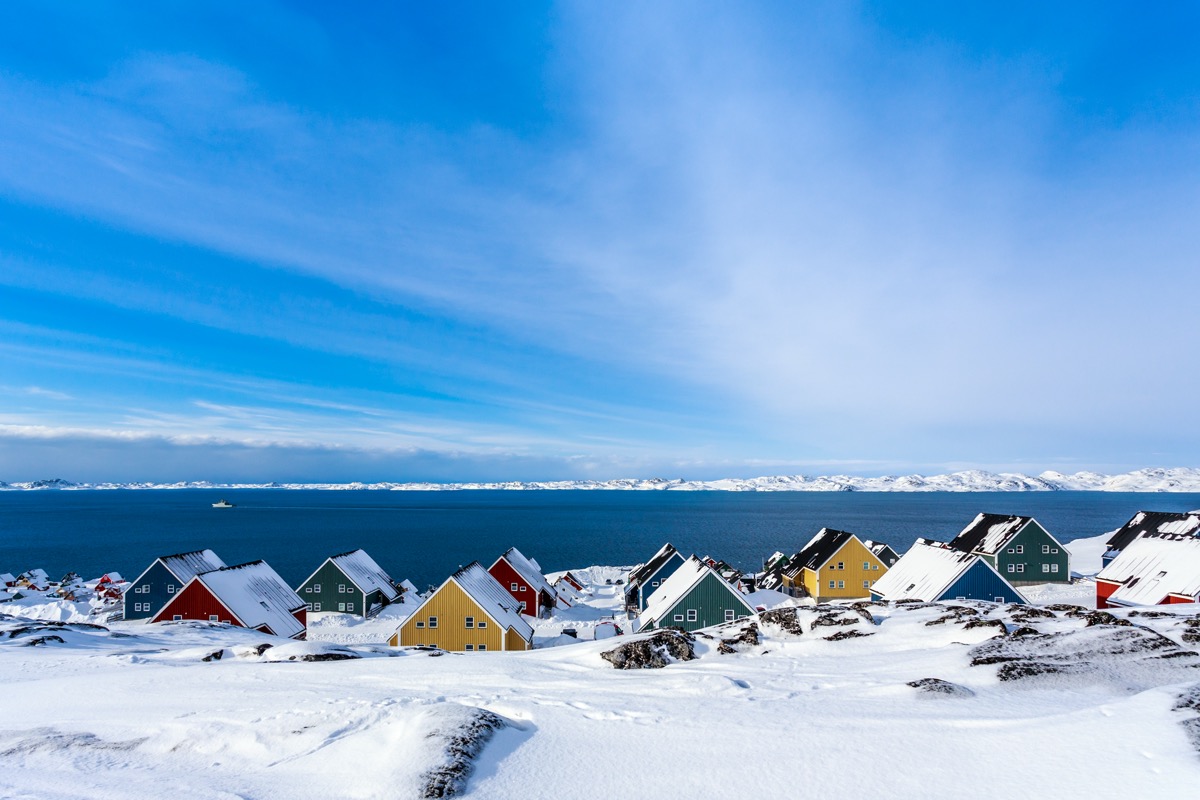
Around 80 percent of Greenland is covered by the Greenland Ice Sheet, which Britannica explains is the "largest and possibly the only relic of the Pleistocene glaciations in the Northern Hemisphere." But has it always been so icy? Well, at the bottom of a 1.4 km core sample, which was taken in 1966 at Camp Century during the Cold War, researchers found "well-preserved fossil plants and biomolecules," which means that the massive sheet melted and reformed at least once in the last million years. Brrrrr!
6Whale songs can be used to map out the ocean floor.
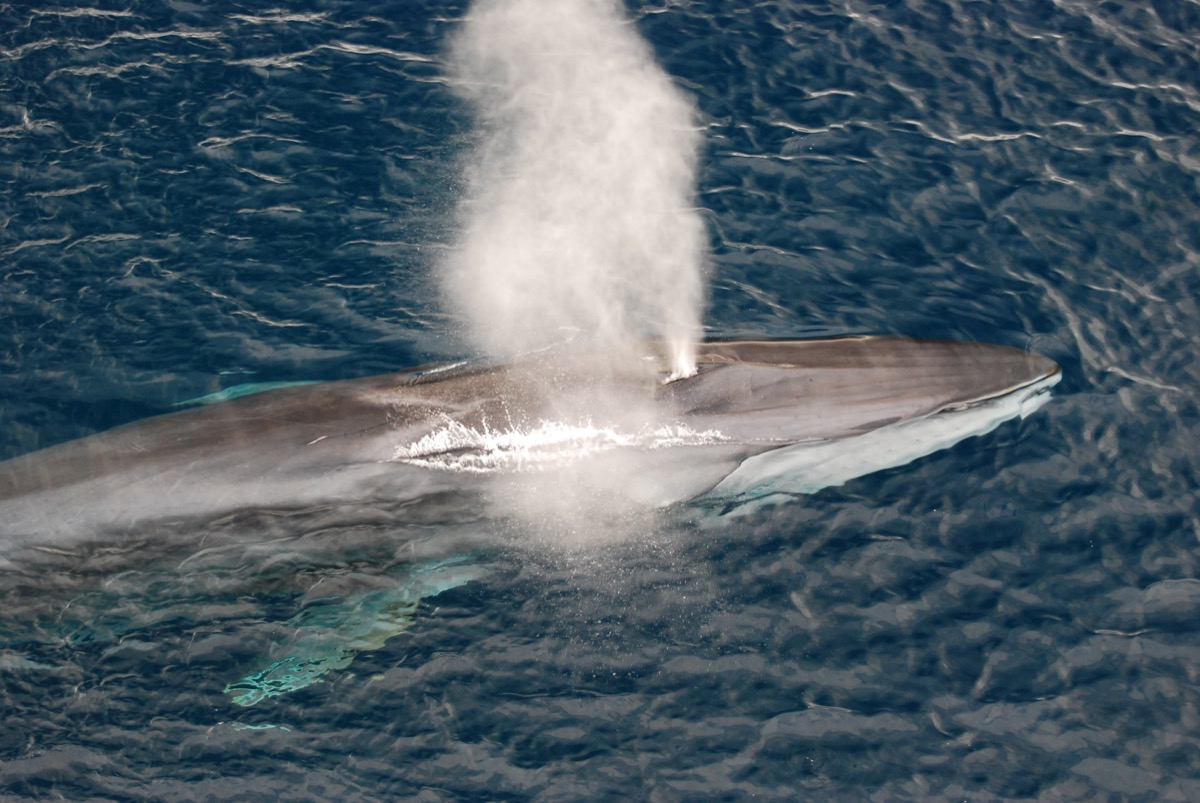
Fin whales are basically the Barry White of the ocean. The deep, bellowing songs that males use to attract mates are considered to be the loudest of all marine life and can be "heard up to 1,000 kilometers (600 miles) away," according to Scientific American. They can also be used to sonically map out the ocean floor thanks to the fact that the sound can reach depths of 2.5 kilometers (1.6 miles) under the water, which bounces back and provides researchers with accurate measurements. Beyond that, a 2021 study in Science showed how using a fin whale's song can be far more useful and have less of a negative impact on sea life than using a large air gun, which is the typical tool researchers rely on.
7New creatures have been found in deep-sea volcanoes.
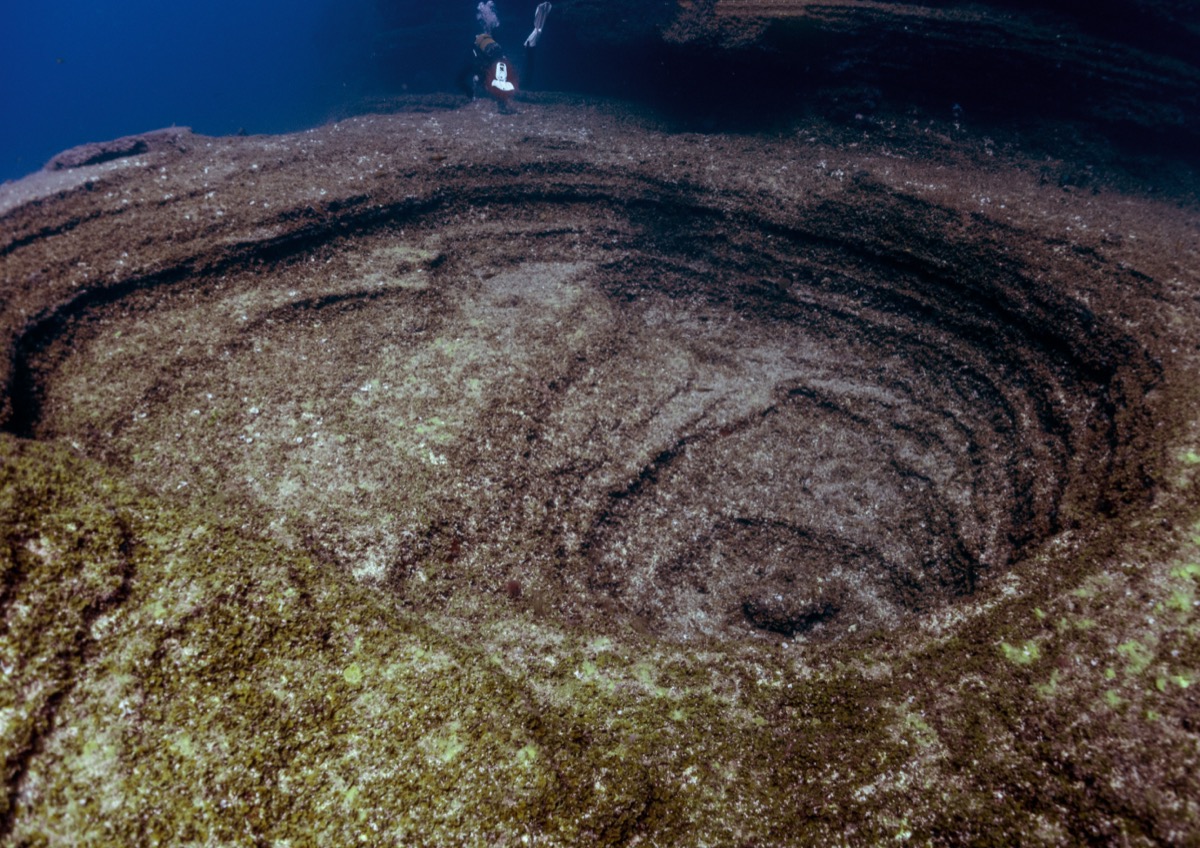
Finding previously undiscovered organisms in the depths of the ocean may sound like something straight out of a sci-fi horror film, but a 2020 study of a deep-sea volcano near New Zealand, published in Proceedings of the National Academy of Sciences of the United States of America, uncovered "over 90 putative bacterial and archaeal genomic families and nearly 300 previously unknown genera." Some research has linked hydrothermal vents, like deep-sea volcanoes, to the "origin of life." So are we looking at the early signs of future land-dwellers? We'll have to wait and see.
8Mount Everest is bigger now than the last time it was measured.
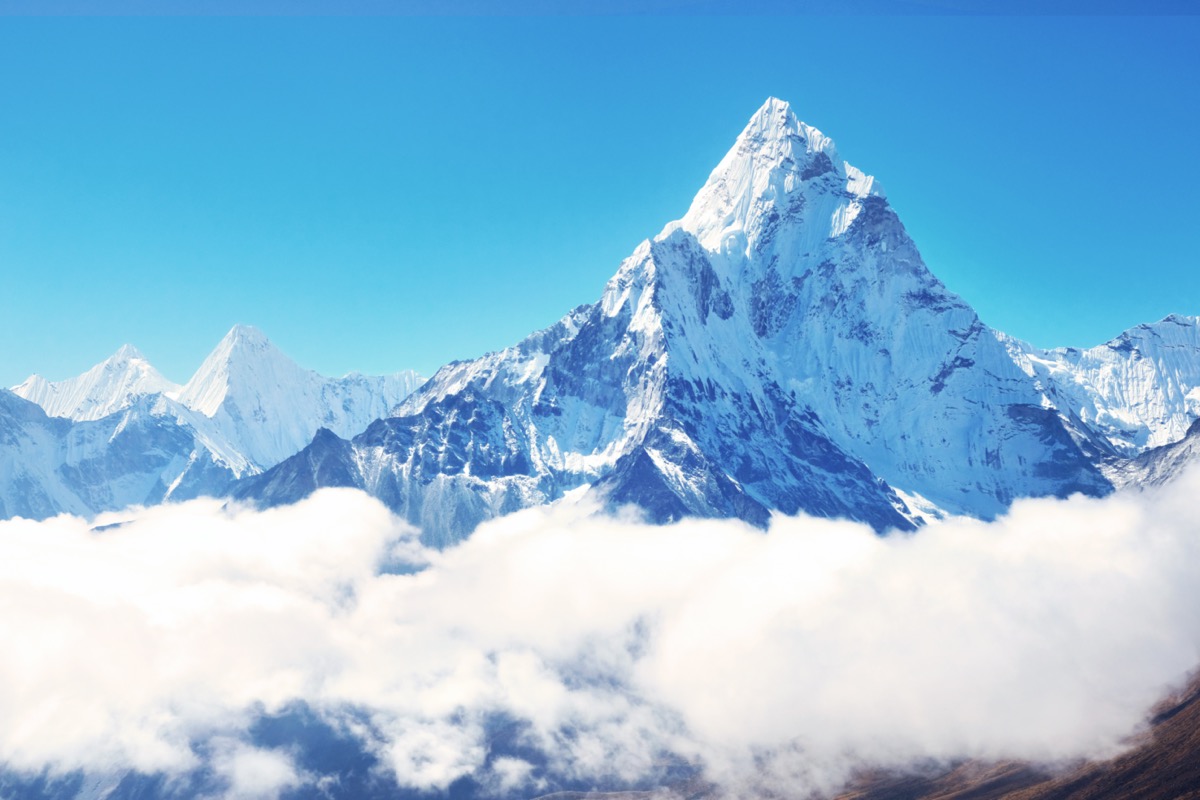
Mount Everest may not have physically grown, having reached maturity a long time ago, however, the most recent measurement performed by surveyors representing China and Nepal has the mountain peak standing taller than we'd thought in the past. Previous readings have ranged from 29,002 feet above sea level in 1856 down to 20,029 in 1955, according to NPR. But after the long process of measuring the mountain with GPS devices, experts have now stated that Mount Everest stands at a whopping 29,031.69 feet, due to plate tectonics.
9Climate change is causing flowers to change color.
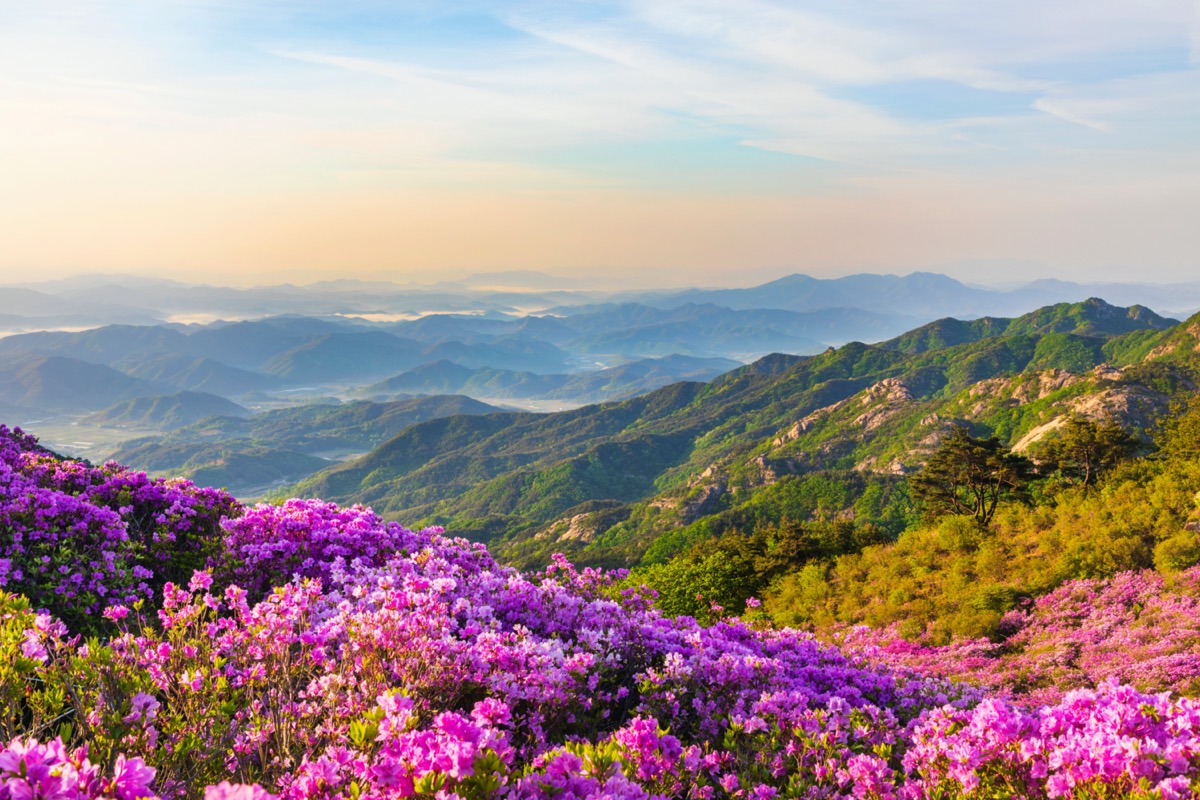
Don't worry, your prized red roses aren't going to turn turquoise overnight, but an increase in UV radiation due to the ozone layer deteriorating over the past decades has caused flowers all over the globe to change. A 2020 study led by Clemson University scientists determined that the UV pigmentation in flowers has increased over time which has led to the degradation of their pollen. Although we can't see the color change with our eyes, it is a big problem for pollinators like bees who are attracted to the bright colors that flowers produce.
10Dentistry is the oldest profession in the world.

Dentistry goes all way back to when humans first had teeth…well not quite that long. However, one study found evidence of teeth being drilled in skulls that dates from 7,500 to 9,000 years ago. The holes were likely made using a prehistoric bow-drill. Could that be the work of the first dentist? Other biting research conducted by the University of Bologna, Italy on a 14,000-year-old skull found that "one rotten tooth in the jaw had been deliberately scoured and scraped with a tool," according to the BBC. That makes dentistry one of the oldest recorded professions and is definitely a reason to smile.
11North Korea and Cuba are the only places you can't buy Coca-Cola.

No matter where you go, it's comforting to know you can always enjoy a Coca-Cola. Well, almost anywhere. While this fizzy drink is sold practically everywhere, it still hasn't (officially) made its way to North Korea or Cuba, according to the BBC. That's because these countries are under long-term U.S. trade embargoes.
However, some folks say you might be able to snag a sip of the stuff if you try hard enough—although it'll typically be a lot more expensive than what you would pay in the states—and probably imported from a neighboring country such as Mexico or China.
12The entire world's population could fit inside Los Angeles.
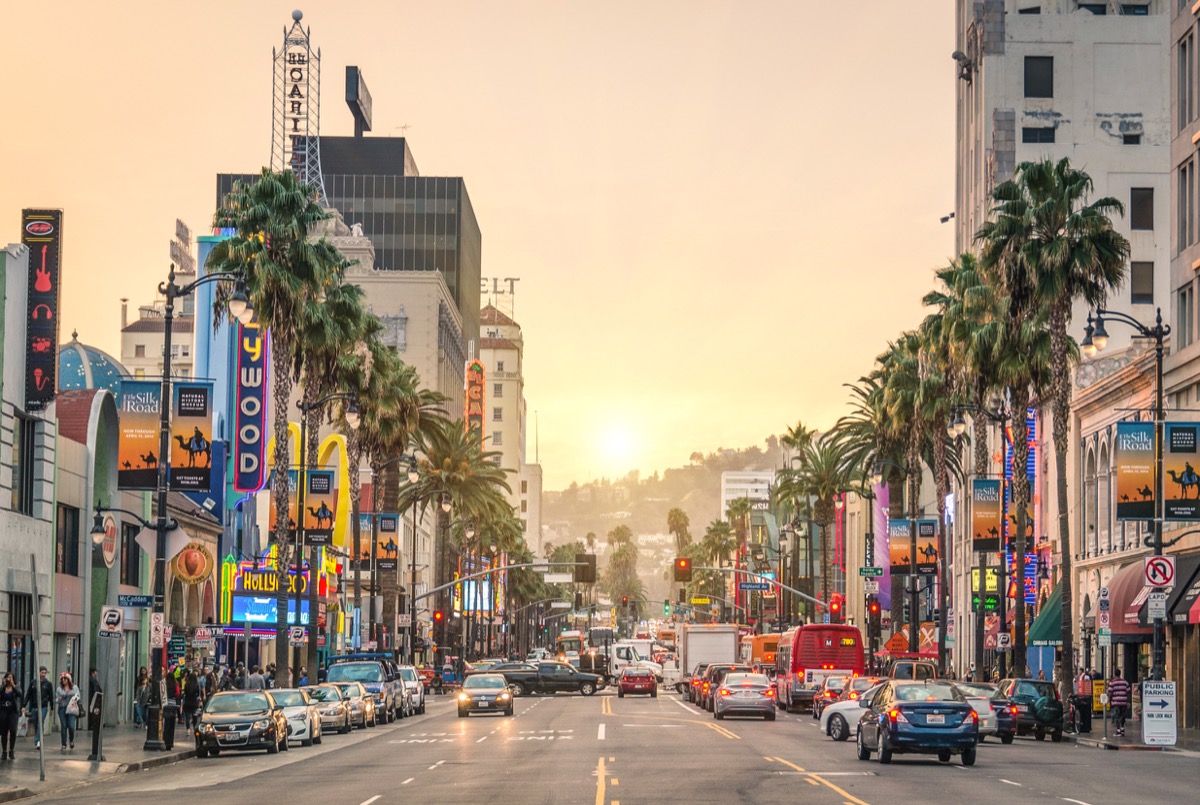
The world's total population is more than 7.5 billion. And obviously, that number sounds huge. However, it might feel a little more manageable once you learn that if every single one of those people stood shoulder-to-shoulder, they could all fit within the 500 square miles of Los Angeles, according to National Geographic.
13There are more twins now than ever before.

You might think twins are a rarity, but they're actually becoming more common than ever. "From about 1915, when the statistical record begins, until 1980, about one in every 50 babies born was a twin, a rate of 2 percent," writes Alexis C. Madrigal of The Atlantic. "Then, the rate began to increase: by 1995, it was 2.5 percent. The rate surpassed 3 percent in 2001 and hit 3.3 percent in 2010. [That means] one out of every 30 babies born is a twin."
Scientists believe this trend is due to the fact that older women tend to have more twins, and women are choosing to start families later. Fertility treatments such as in-vitro fertilization likely also play a role.
14The hottest chili pepper in the world is so hot it could kill you.

The "weapons-grade" Dragon's Breath chili pepper is so hot it's downright deadly. If you ate one, it could potentially cause a type of anaphylactic shock, burning your airways and closing them up.
"I've tried it on the tip of my tongue and it just burned and burned," said Mike Smith, the hobby grower who invented the Dragon's Breath along with scientists from Nottingham University. So why make such an impractical pepper? As it turns out, the chili was initially developed to be used in medical treatment as an anesthetic that can numb the skin.
15More people visit France than any other country.

France is a beautiful country, filled to the brim with delicious wines, scrumptious cheese, and tons of romance. So it's no surprise that more people want to visit France than any other country in the world, according to the United Nations World Tourism Organization.
In 2017, the European country welcomed 86.9 million people. Spain was the second-most popular destination with 81.8 million visitors, followed by the United States (76.9 million), China (60.7 million), and Italy (58.3 million). La vie est belle!
16The world's most densely populated island is the size of two soccer fields.
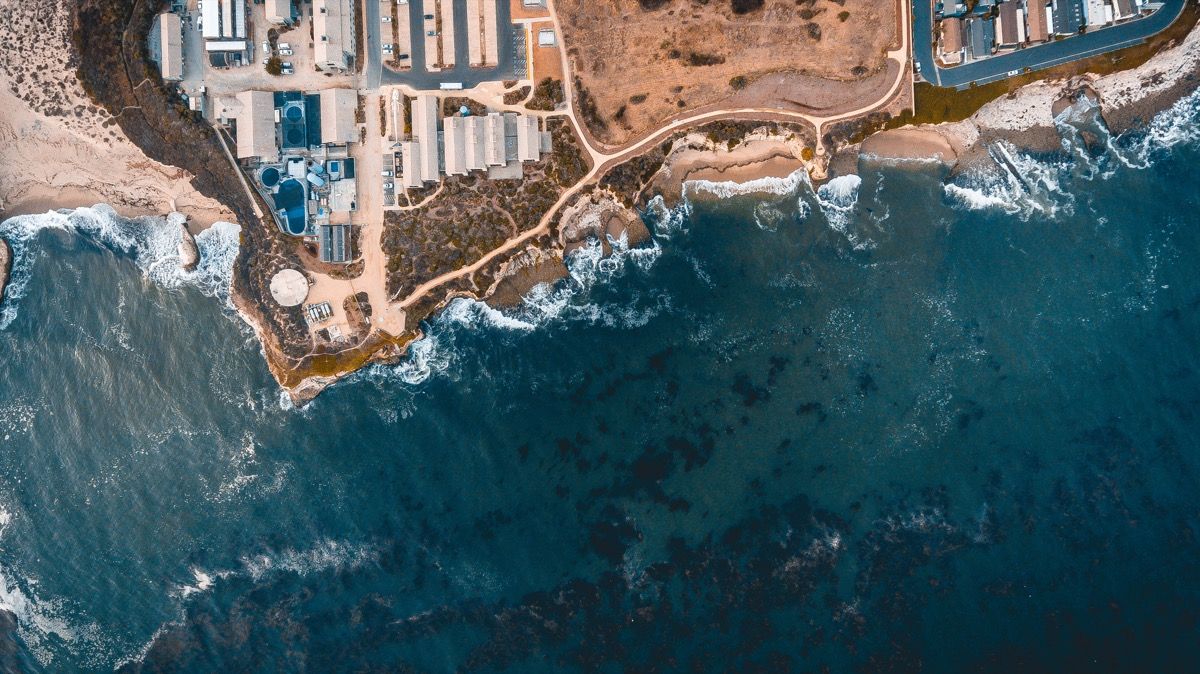
Santa Cruz del Islote in the Archipelago of San Bernardo off the coast of Colombia may only be about the size of two soccer fields (two acres), but the artificial island has four main streets and 10 neighborhoods. Five hundred people live on the island in around 155 houses. With so many people packed into such a small space, it's the most densely populated island in the world, according to The Guardian.
17The Canary Islands are named after dogs, not birds.

It might seem safe to assume that the Canary Islands were named after canary birds, but the location was actually named for a different animal. Although it's off the coast of northwestern Africa, the archipelago is actually part of Spain. In Spanish, the area's name is Islas Canarias, which comes from the Latin phrase Canariae Insulae for "island of dogs."
18Indonesia is home to some of the shortest people in the world.
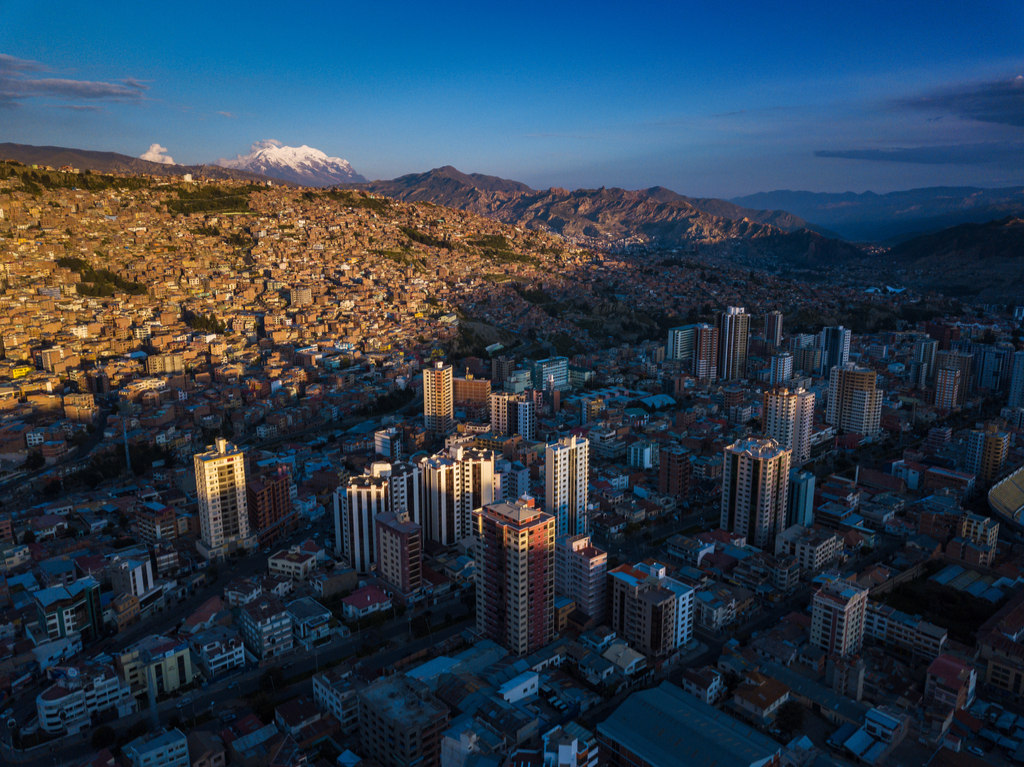
Though there are short people and tall people everywhere, Indonesia is home to some of the shortest people in the world, according to data compiled from various global sources by the Telegraph in 2017.
When taking both genders into account, the average adult is around 5 feet, 1.8 inches. People in Bolivia don't tend to be much taller, with an average adult height of 5 feet, 2.4 inches. The tallest people among us live in the Netherlands, where the average adult height is 6 feet.
19The Paris Agreement on climate change was signed by the largest number of countries ever in one day.
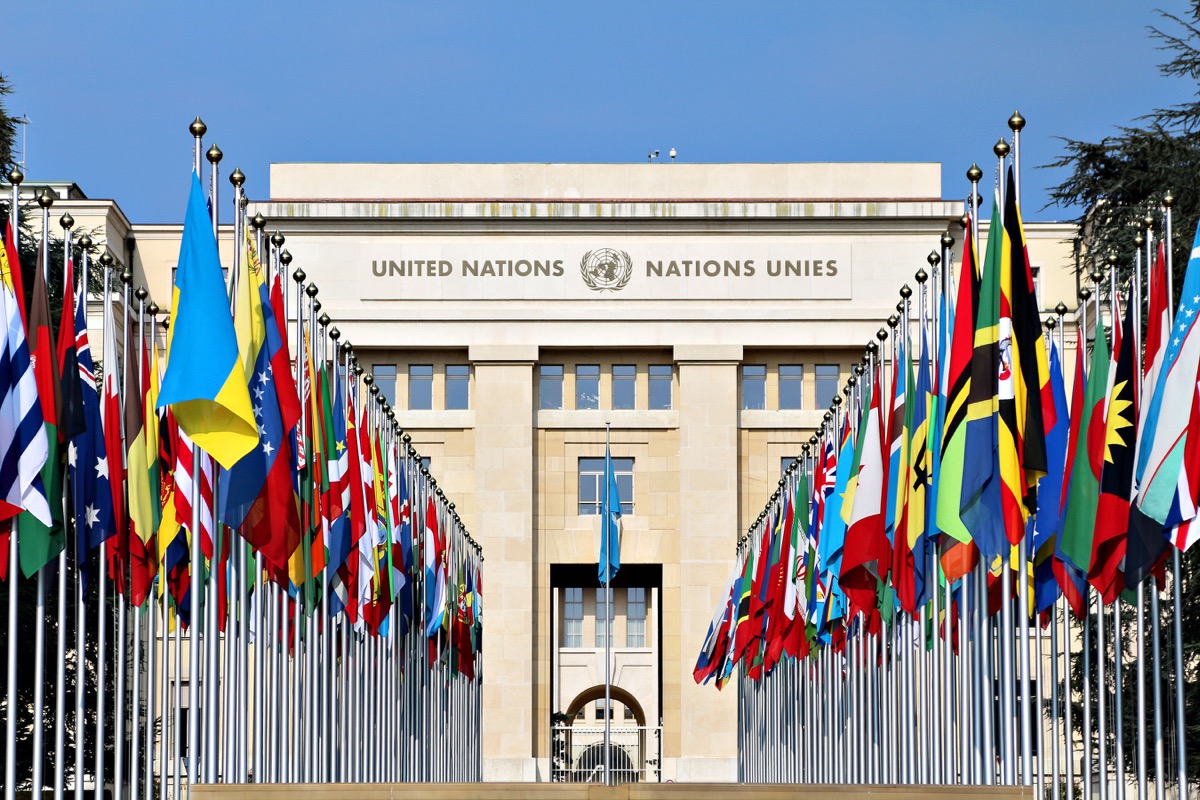
When 174 world leaders signed the Paris Agreement on Earth Day in 2016 at the United Nations (UN) headquarters in New York, it was the largest number of countries ever to come together to sign anything on a single day. The agreement aims to combat climate change and accelerate and intensify the actions and investments needed to strengthen the global climate effort.
20The world's quietest room is located at Microsoft's headquarters in Washington state.

Silence is golden, as they say. And while it may not be worth quite as much as jewels and gold to most people, it certainly was the primary goal for those who built the quietest room in the world. Located at Microsoft's headquarters in Redmond, Washington, the lab room measures a background noise of -20.35 dBA, which is 20 decibels below the threshold of human hearing and breaks previous records for spaces that were deemed the planet's quietest places, according to CNN.
21There's only one country in the world that doesn't use the metric system.

For simplicity's sake, most of the more than 200 countries in the world use the metric system when describing things like length or mass. However, there were recently three countries that stood out: Liberia, Myanmar, and the United States.
In 2018, Liberia commerce and industry minister Wilson Tarpeh said the government planned to adopt the metric system in order to promote accountability and transparency in trade, according to the Liberian Observer. Myanmar made a similar commitment, which leaves the U.S. as the lone holdout.
22The longest place name on the planet is 85 letters long.
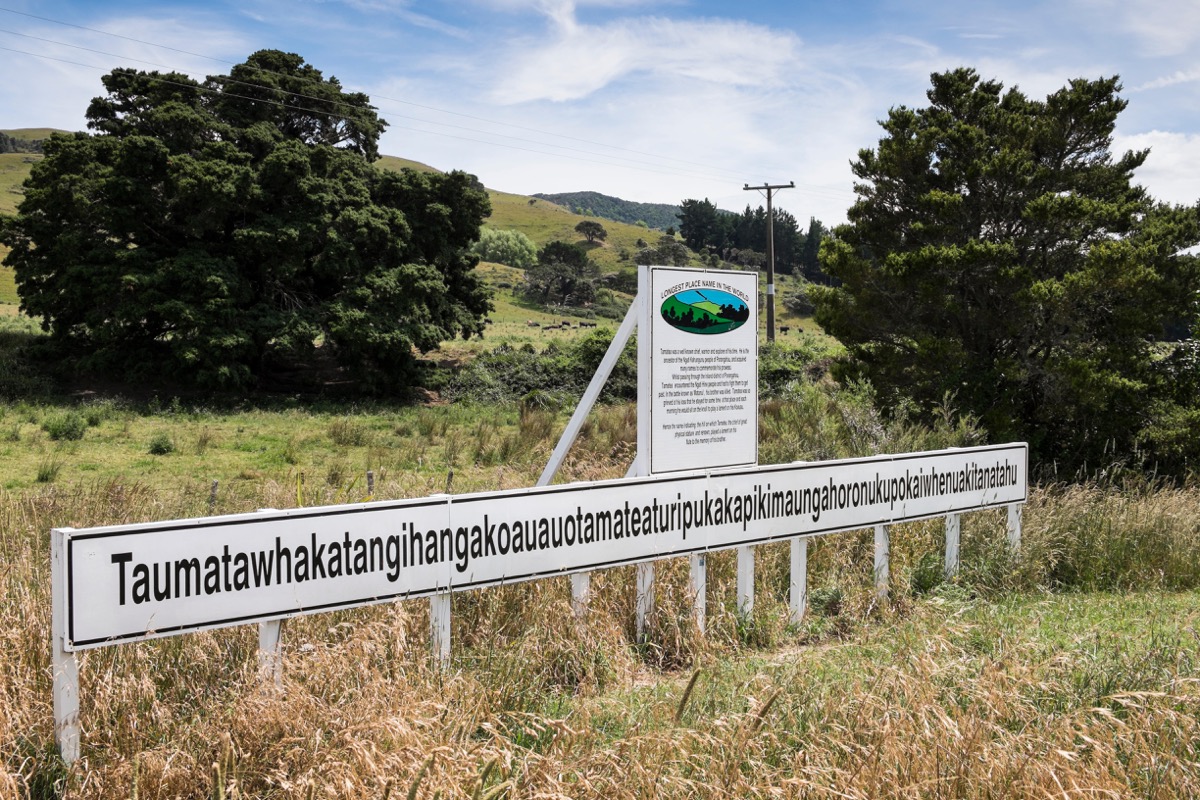
People who live in Mamungkukumpurangkuntjunya Hill, Australia, need a little patience when it comes to learning to spell their hometown's name. But you know what? So do the folks from Lake Chargoggagoggman-chauggagoggchaubunagungamaugg in Massachusetts and Tweebuffelsmeteen-skootmorsdoodgeskietfontein, South Africa.
None of them have quite as much work to do when jotting down their address as those who live in Taumatawhakatangihanga-koauauotamateaturipukakapikimaung-ahoronukupokaiwhenuakitanatahu, New Zealand, though. At 85 letters long, this is the longest place name in the world.
23Four babies are born every second.

Every second, we welcome four new babies into our overall population. Do a little math and you'll find out that means there are approximately 250 births each minute, 15,000 each hour, and 360,000 each day.
24The coldest temperature ever recorded was -144 degrees Fahrenheit.
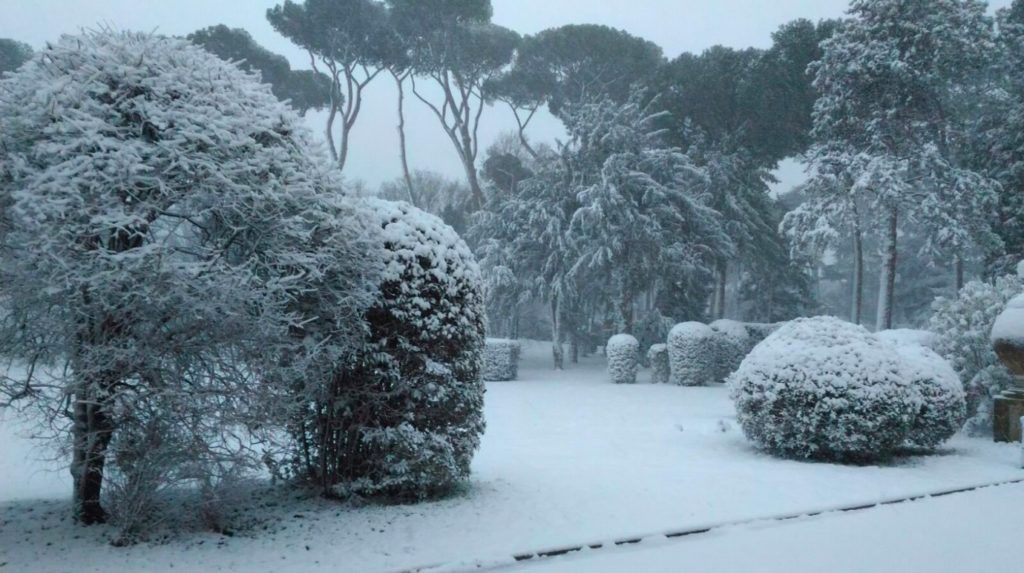
You might think you're accustomed to frigid air and blustery winds, but the average winter day has nothing on the coldest day ever recorded, which was -144 degrees Fahrenheit. The temperature was recorded in Antarctica during a span of research between 2004 and 2016. Just a few breaths of air at that temperature would induce hemorrhaging in your lungs and kill you.
25The Earth's ozone layer will make a full recovery in 50 years.

Because of pollution, the Earth's ozone layer has suffered a lot. That's bad news for everyone, since the fragile gas layer protects our planet and shields us from the sun's harmful ultraviolet rays. Fortunately, climate change experts believe that the ozone layer will fully heal within 50 years, according to a 2018 report from the United Nations.
The recovery is thanks in large part to the Montreal Protocol of 1987, which put a global ban on the use of one of the main culprits for the damage: chlorofluorocarbons (CFOs). Previously, CFOs had been common in refrigerators, aerosol cans, and dry-cleaning chemicals.



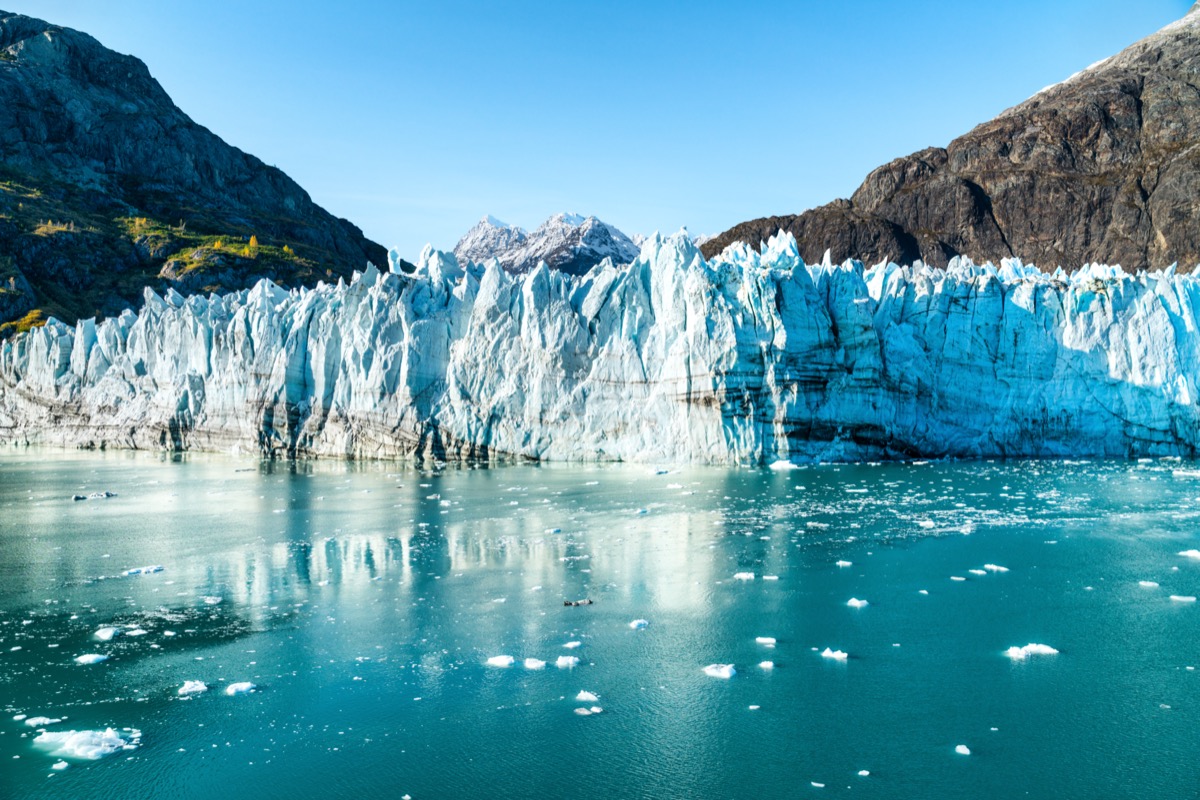


2 Comments
Exceptional
ReplyDeleteI liked it very well
Ooo
ReplyDeleteVery interesting
Good